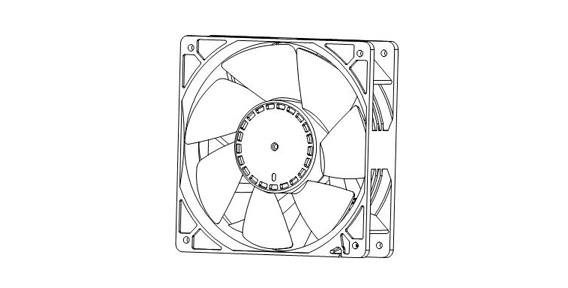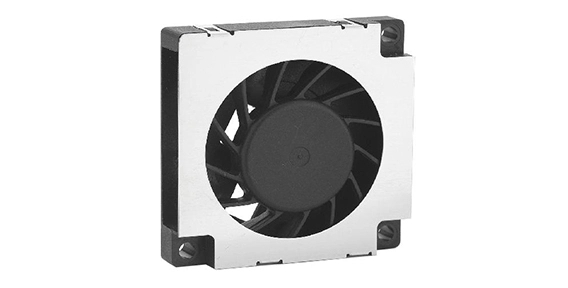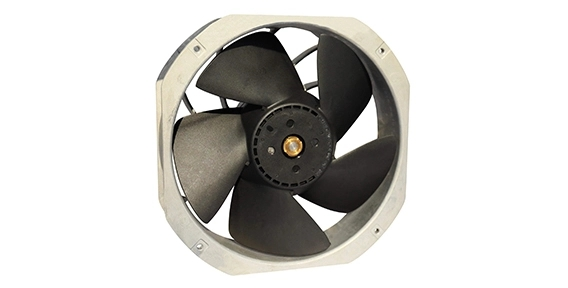In the world of thermal management and ventilation, the DC axial fan stands as a key player, offering efficient cooling solutions in a variety of applications. This exploration delves into the fundamental aspects of the DC axial fan, examining its design, functionality, and widespread use across industries.
Unveiling the Basics of DC Axial Fans
A DC axial fan is a type of fan designed to produce a unidirectional airflow, making it particularly effective in applications where consistent and directed air movement is crucial. The "DC" in its nomenclature indicates that the fan operates on direct current power, a feature that contributes to its precise control and energy efficiency. At the heart of the DC axial fan is the axial cooling fan design, where the blades rotate around an axis, generating a linear airflow parallel to the axis.
Mechanism and Design of DC Axial Fans
The mechanism of a DC axial fan is relatively straightforward yet highly efficient. It consists of a set of blades attached to a central hub, which is driven by a motor powered by direct current. When the fan is activated, the motor spins the blades, creating a directed and continuous airflow. This axial cooling fan design proves to be particularly effective in applications where a streamlined and focused airflow is essential for cooling electronic components, expelling hot air, or maintaining optimal thermal conditions.
The axial cooling fan mechanism inherent in DC axial fans sets them apart in terms of their ability to produce a linear and directed flow of air, making them well-suited for a wide array of ventilation needs.

DC Axial Fan: Versatility Across Industries
DC axial fans find versatile applications across various industries, contributing significantly to thermal management and airflow requirements. In the realm of electronics, these fans are commonly utilized in computers, servers, and electronic devices to dissipate heat generated during operation. The axial cooling fan design ensures that a consistent and directed stream of air is delivered to cool sensitive electronic components, preventing overheating and preserving the integrity of the devices.
Beyond electronics, DC axial fans play a crucial role in ventilation systems for residential, commercial, and industrial spaces. From kitchen exhaust hoods to HVAC systems, these fans contribute to maintaining air quality and optimal temperatures. The axial cooling fan mechanism proves advantageous in these scenarios by efficiently expelling air and facilitating proper air exchange.

DC Axial Fan: Energy Efficiency and Precision Control
One of the notable advantages of DC axial fans lies in their energy efficiency. The ability to operate on direct current power enables precise control over the fan speed. This variable speed control is often achieved through methods like pulse-width modulation (PWM) or voltage regulation, allowing users to adjust the fan speed based on the specific cooling requirements. The axial cooling fan, with its controlled and focused airflow, ensures that the fan operates at optimal levels, contributing to energy savings.
In applications where precision control is paramount, such as in electronic devices with varying thermal demands, the axial cooling fan design of DC axial fans becomes a strategic choice. The ability to fine-tune the airflow according to specific requirements enhances the overall efficiency of the cooling process.
Innovations in DC Axial Fan Technology
As technology continues to advance, innovations in DC axial fan technology are shaping the future of thermal management. Enhanced blade designs, the use of advanced materials, and intelligent control systems contribute to the ongoing evolution of these fans. The integration of smart technologies, such as temperature sensors and speed control algorithms, further refines the efficiency and reliability of DC axial fans.
The axial cooling fan mechanism, combined with technological innovations, positions DC axial fans as cutting-edge solutions in the ever-evolving landscape of thermal management. These advancements align with the broader trends of increased efficiency, reduced energy consumption, and smarter control systems.
In conclusion, a DC axial fan represents a sophisticated and versatile solution for a myriad of thermal management and ventilation needs. The axial cooling fan design, coupled with the advantages of operating on direct current power, positions DC axial fans as indispensable components in maintaining optimal temperatures and air quality across diverse industries. As technology advances, the role of DC axial fans in enhancing efficiency and precision in thermal management is set to become even more prominent.

 EN
EN 
 +
+
 +
+
 +
+



